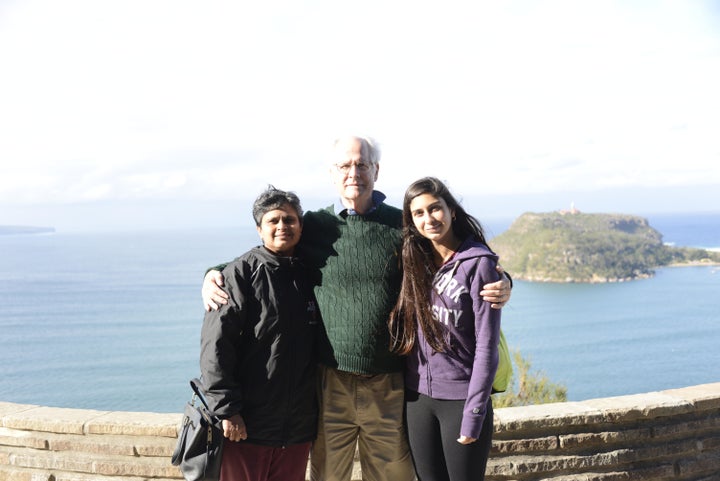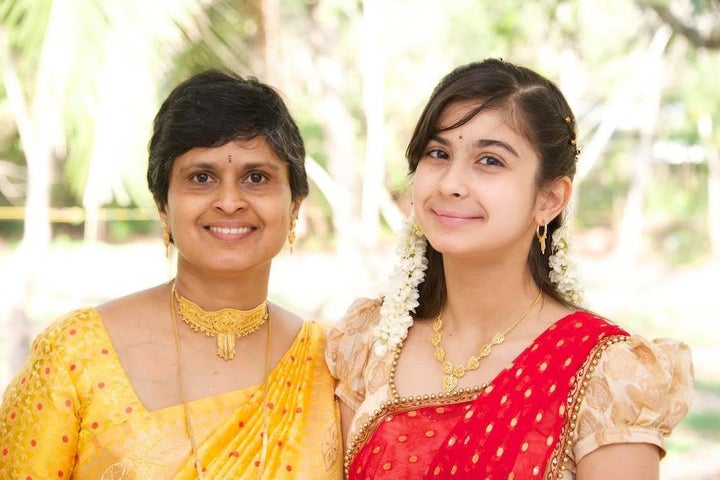
When it comes to identity, most think “who are you?” The question I’ve consistently heard is, “what are you?”
Some insist I’m Brazilian and others guess I’m from the Middle East, but my mom’s Indian and my dad’s white. While being biracial has kept me constantly aware of both my ethnicities, the college admissions process has sparked an identity crisis.
In seventh grade, it started. “You could apply for a Hispanic scholarship,” my sister said at the dinner table, half-jokingly, “since Mom’s maiden name is Fernandez and most people think you look Hispanic.”
There isn’t anything Hispanic about my identity; my mom’s maiden name only stems from Portuguese missionaries in her Indian village. Even in seventh grade, I knew who I was — part white, but not quite. I was aware my white friends probably weren’t wearing churidars to their Christmas celebrations. I could smell that their mothers’ cooking certainly had fewer spices. And as I gathered from their constant invitations to hang out, their parents weren’t nearly as strict about homework, grades or performance.
I was Indian-American and I had no problem with that.
I was realizing that according to colleges, however, to have Indian blood is to be robotic, passionless and devoid of personality. Harvard, for example, is the pinnacle of education but apparently not fond of the personalities of Asians. To suspect a bias against Asian-American students is one thing. But to realize that the perception of coming up short in having a “positive personality” and being “widely respected” contributes to a 24 percent decrease in accepted Asian-Americans is another.
Harvard’s dismissal of Asians feels like a high school popularity contest — as if the elite school is telling me, “No matter how hard or passionately you work on your education, unless you’re liked you’ll only be that nerdy Indian kid.”
Naturally, I dodged from these stereotypes and disadvantages and searched for other routes to my college dreams.
“I was realizing that according to colleges, however, to have Indian blood is to be robotic, passionless and devoid of personality”
The advice continued to float by in high school, though. An article popped up about a company that helps with college applications that advised top students to “appear less Asian.” The evidence was piling up — getting into an elite college meant hiding my ethnicity. It was a hurtful message. Apparently, the culture I loved and lived with was unappreciated and disdained. Still, college was my goal and so I convinced myself: I could just be white!
At the start of junior year, however, I stopped being so sure. As I perused college essay questions, the words “background” and “identity” kept popping up. I pictured paragraphs on being biracial and bilingual. I knew the adaptability, open-mindedness and cultural knowledge central to my identity was thanks to my heritage. Learning my mother’s native tongue, Malayalam, had opened me up to the world. I was so grateful and proud of my heritage.
Just as quickly as I had these fond thoughts, I deleted my imaginary paragraphs. It felt like I was deleting myself but if I answered these questions instinctively and truthfully, I’d give away my Asian ethnicity and, according to all my gathered statistics and advice, possibly cost myself a college admission.

But here was my dilemma: There was no question I could figure out how to entirely answer without being Indian. I couldn’t communicate my personal identity with colleges without revealing my ethnicity. Since birth, I had been explaining my heritage to confused faces with pride, and my unpracticed attempt in hiding it only left me feeling ashamed.
I decided to take a different approach — I would be the very best Asian I could be. Khan Academy’s SAT prep replaced my social life and became a constant companion. The SAT transformed into a desperate idol and the numbers became the defining factor of my identity.
But numbers are not reliable and the identity sharply shattered when the marks for my first SAT came in more than 100 points below my target. I had failed in making a stellar SAT score part of my identity. Still, the relentlessly hard-working Indian culture predictably prodded me forward without hesitation. So I picked up the pieces of my fallen pride, studied again with renewed humility and received a score over my initial goal. But then what? My obsession didn’t stop. I wasn’t satisfied.
My supposed embracing of Asian stereotypes had led me to a path of dangerous idolization. Where I was once content with personal devotion and honest ambition, I became concerned with college success by whatever means necessary. My mother and her culture had, throughout my life, encouraged me to work hard, study hard and pursue what I love. However, I had pushed away my true heritage, as well as the words of my parents, and allowed the college and media stereotypes of a culture to pressure me and define my identity.
The truth — the truth I now realize — is that I am unlike any other Asian. No Asian is like any other Asian. Sure, some work hard on their standardized tests. Some play violin like maestros. Others don’t wish to go to college at all. Regardless, they are all Asian and so am I. How I look on a college application defines neither my identity nor my ethnicity.
“The truth — the truth I now realize — is that I am unlike any other Asian. No Asian is like any other Asian”
My tumultuous journey with college applications during junior year did reveal that I was, whether I liked it or not, Asian. I wasn’t a stereotype but I did have my culture. If I didn’t have an Indian mother, I without a doubt would not have the work ethic that I have. I would not have the love of ancient stories and civilizations that I have. I would not have the awareness of poverty in both the United States and India. A life where I am not Indian is a life where I am not myself.
Why should I hide the beauty of my Indian-American culture? Why should any Asian hide their magnificent heritage? The diversity of Asia includes cultures that no one should be ashamed of. The stereotypical pinpoints of Asian culture, diligence, discipline, and obedience, are only an aspect of Asian culture — and an often noble aspect at that. The stories that each individual Asian student and family have are bound to be more diverse and flavorful than colleges could expect.
My college application doesn’t define my identity. No college is worth hiding who I am. I will write about the beauty of being biracial and the stories from my family home in India. I will enthusiastically share how my Indian heritage has birthed my passions. I will confess who I am entirely, for I am not ashamed. I will be Asian and white and all that I am and if a college doesn’t want to accept that, I don’t want to be there.
Whether it hinders my admission or not, I will be putting “Asian” on my college application.
Have a compelling first-person story you want to share? Send your story description to pitch@huffpost.com.
